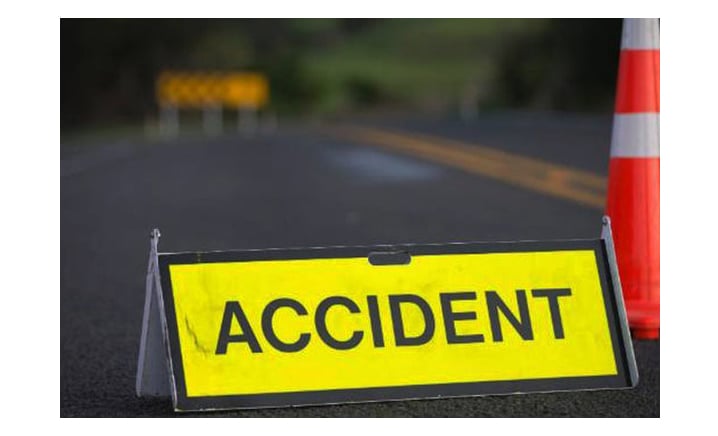
The acoustic edge line is designed to alert a motorist who is veering off the road or from their lane. PHOTO/Roland D. Nasasira
A week ago, Robert Atwiine started his return journey to Kampala from Kabale District in western Uganda. When he reached the Ntungamo to Mbarara Road as he indicated to park by the roadside at Ndeija Market, his car started making an irritating noise, which he thought was a flat tyre.
“When I stopped and got out of the car, I noticed it was the road markings I had run over that had caused the sound. I walked around the car to check if the tyres had sustained any damage or cuts but they were still in good condition,” Atwiine recalls.
Robina Nampeera, a road safety engineer with the Uganda National Roads Authority (Unra), says a broken white line that produces noise when your car tyres drive over it is known as the acoustic edge line. Even if you are absent-minded while driving, the sound produced by these edge lines makes you regain your consciousness.
These are being installed on major highways to mark the edges of road lanes. Initially, road edges were designed with thick continuous lines that never alerted drivers in case they were getting out of their lanes. These, Nampeera says, are being phased out and being replaced with communicating acoustic edge lines.
The technology behind acoustic edge lines
The acoustic edge line is made using thermo-plastic material. Although thermoplastic is paint, it is more like plastic and can be built to thicker dimensions, unlike paint, which starts to flow when built to thicker dimensions. The acoustic edge line is built with gaps that appear to be dotted when viewed at close range. they measure 100mm by 100mm, equivalent to 10 centimetres of a line and 10 centimetres of a gap.
“The machine used is calibrated to draw markings but to a thicker dimension and uses more paint than other ordinary lines. The moment you are distracted while driving and your car tyres drive over the line and the gap, it will produce a sound irritating enough to warn you that you need to stay in the right lane,” Nampeera explains.
Currently, all recently constructed roads in Uganda have acoustic edge lines. These include Kayunga to Jinja Road, Katosi Road in Mukono and oil roads in Bunyoro sub-region, among other areas. Some roads are being remarked, including Jinja to Bugiri Road which will stretch to Malaba, among others.
To ensure that road marking lines are easier to see, especially at night and during rainy weather, glass beads or ballottini are added to the molten thermoplastic paint material in the calibrating machine tank as well as on top of the freshly applied paint. The glass beads are spherical and once they counter light from your vehicle, they reflect the light to the driver, showing you in which lane to drive safely.
“This makes road marking lines more visible to the driver since there is mutual communication. It is some of the technology being used to make sure quality markings are installed on all national roads to deliver safer roads as part of the safe systems approach. We try to eliminate hard bodies such as rocks, trees, sharp edges and guard rails, among other barriers,” Nampeera adds.
In Kampala, the Northern Bypass has ghost islands with white-shaded lines as areas of recovery due to driver mistakes. These were not designed for perfect road users but for drivers who make mistakes on the road.
Understanding the safe systems approach
The safe systems approach are internationally accepted method or approach to addressing road safety.
According to toolkit.irap.org, the safe system approach underpins all aspects of an effective road safety management system. The approach is built on the premise that no one should be killed or seriously injured while using the road network.
“The safe system approach recognises that humans are fallible and will make mistakes. There are also limits to the kinetic energy exchange which humans can tolerate (for example during the rapid deceleration associated with a crash) before serious injury or death occurs. A key part of the safe system approach requires that the road system be designed to take account of these errors and vulnerabilities so that road users can avoid serious injury or death on the road,” the portal says.
The portal states that a safe system approach has three characteristics; mistakes, errors of judgment and poor decisions, which are intrinsic to humans. The road system needs to be designed and operated to account for this. Secondly, the portal adds that when not protected, humans cannot survive impacts that occur at greater than around 30km/h.
“The engineered elements of the system, vehicles and roads, can be designed to be compatible with the human element, recognising that while crashes might occur, the total system can be designed to minimise harm, particularly by making roads self-explaining and forgiving of human error,” the portal adds.
Apart from safer roads, the other pillars of the safe systems approach include safer speeds, safe road users, post-crash care and safe vehicles. Globally, the safe systems approach is pushing vehicle manufacturers to provide safe interventions to prevent crashes. But in case they happen, the risk of death should be managed.
These include features such as airbags, seatbelts, antilock brake system (ABS) and vehicles that cannot allow you to overtake in blind spots, among other technologies.
Takeaway
A true systems approach involves optimising across all the elements to create layers of protection against harm on the roads.
Safe road users: The safety of all road users is equitably addressed, including those who walk, bike, drive, or travel by other modes.
Safe vehicles: Vehicles are designed and regulated to minimise the frequency and severity of collisions using safety measures that incorporate the latest technology.
Safe speeds: Humans are less likely to survive high-speed crashes. Reducing speeds can accommodate human-injury tolerances in three ways; reducing impact forces, providing additional time for drivers to stop, and improving visibility.
Safe roads: Designing transportation infrastructure to accommodate human mistakes and injury tolerances can greatly reduce the severity of crashes that do occur. Examples include alerting users to hazards and other road users.
Source: highways.dot.gov








